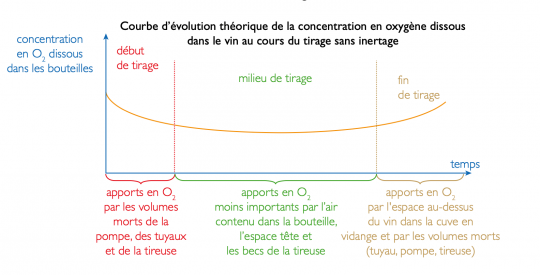Oxygen dissolution before and during bottling
In general, any operation that sets the wine in motion increases the oxygen dissolution and its consumption. It is more the start and finish of such operations that cause this dissolution (non-inerted vat space, hoses not inerted, etc.).
The final transfer of the wine from the main vat to the racking taps, and the vat used for bottling is no exception to the rule and causes additional dissolution of oxygen in the wine, which is very sensitive at this stage.
At the end of ageing, during bottling, the dissolved oxygen accumulated in the wine (or DO for Dissolved Oxygen) enables the calculation of the HSO (Head Space Oxygen) which represents the oxygen contained in the head space in order to obtain an optimal TPO (Total Packaged Oxygen) for the wine's storage once bottled.
This gives the following relationship: TPO = DO + HSO

